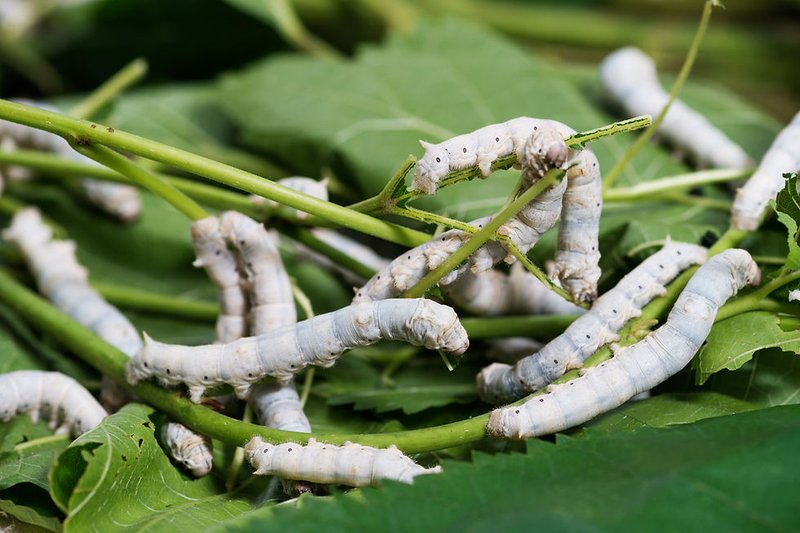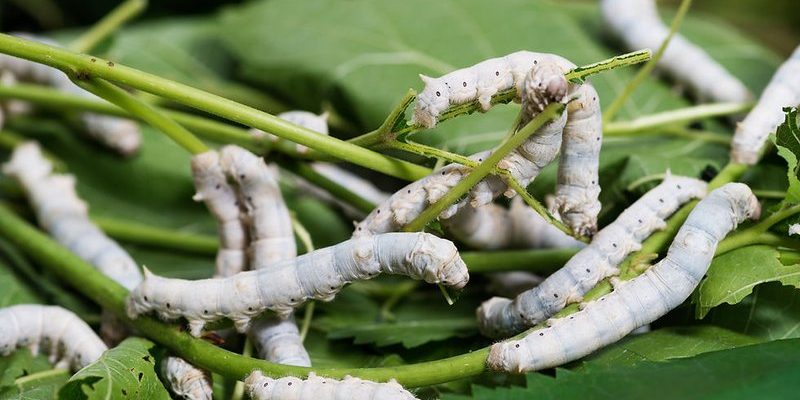
You might be wondering why this age-old tradition is still relevant in our fast-paced society. After all, we have countless fabrics today, from cotton to synthetic materials. But here’s the thing: silkworm farming has unique advantages and potentials that keep it in the spotlight. Let’s dig deeper into the world of silkworms and explore why this practice endures and thrives, even in contemporary times.
The Rich History of Silk Production
Silk has been a symbol of luxury and wealth for centuries. The journey of silk starts in China, where the ancient practice of sericulture, or silkworm farming, began. Legend has it that a Chinese empress accidentally discovered silk when a silkworm fell into her tea, leading her to unravel the mystery of this exquisite thread. Fast forward a few thousand years, and silk remains an integral part of cultural textiles around the globe.
Silkworms are not just any caterpillars; they’re the larvae of the *Bombyx mori*, a species that thrives on mulberry leaves. Overall, the entire process is quite simple but delicate, requiring a careful balance of environmental factors. Farmers keep a close eye on temperature and humidity, ensuring that these little critters have a cozy home. Honestly, it’s like being a parent to tiny, fuzzy kids.
Silk’s Unique Properties
What makes silk stand out among other fabrics? Well, it’s not just about being soft and shiny. Silk is incredibly strong and durable, often compared to steel in terms of tensile strength. It also has a natural sheen that reflects light beautifully, making it a favorite for high-end fashion and luxury home decor.
Here’s the twist: silk is breathable and helps regulate body temperature. In warm weather, it keeps you cool, while in colder climates, it provides insulation. So whether you’re rocking a flowy silk dress in summer or snuggling in a silk blanket during winter, you’re covered! You might think, “But aren’t there cheaper fabrics?” Yes, but nothing quite matches the elegance and feel of silk. It’s like choosing a classic wine over something from a carton.
Economic Impact of Silkworm Farming
Silkworm farming is more than just producing silk; it’s a livelihood for many families around the world. In regions like China, India, and Brazil, sericulture plays a significant role in the economy. It creates jobs — from farmers tending to the silkworms to artisans crafting silk garments. This means that silkworm farming isn’t just about the end product; it weaves together community and economic development.
Moreover, silkworm farming can be a sustainable practice. You see, silk is biodegradable, which makes it an eco-friendlier option compared to synthetic fabrics. Cultivating silkworms uses fewer resources, and with the right techniques, it can even benefit local ecosystems. So, when people invest in silk, they’re not just buying a fabric; they’re supporting ethical farming practices and local economies.
Silk in Modern Fashion and Industry
Today, silk has made a spectacular comeback in the fashion industry. Designers are increasingly turning to silk for its luxurious feel and timeless appeal. It’s not just for dresses and ties anymore; you’ll find silk in everything from stylish face masks to elegant loungewear.
Moreover, brands are presenting silk as a sustainable choice. Consumers are becoming more aware of the environmental impact of fast fashion and are looking for high-quality, timeless pieces. Investing in silk means investing in something that lasts. Plus, when you know it’s a product of thoughtful farming, it makes you feel good wearing it.
The Future of Silkworm Farming
As we peer into the future, silkworm farming is adapting to new technologies and trends. Innovations like biotechnology are being explored to improve silkworm resilience, speed of production, and even the quality of silk. Imagine farmers utilizing data analysis to optimize their farms—it’s like having a smart home for silkworms!
There’s also a growing interest in organic silk production. Consumers are becoming more body-conscious and environmentally aware, so the demand for organic, pesticide-free silk is increasing. This shift could not only benefit farmers but also create a new market segment that values quality and sustainability over quantity.
Challenges Facing Silkworm Farmers
However, it’s not all sunshine and silk. Silkworm farming comes with its own set of challenges. Farmers often face threats from disease, pests, and changing climate conditions. A small outbreak can wipe out a whole crop, which can be devastating for a family dependent on it.
Additionally, competition from synthetic fabrics can drive prices down, making it difficult for small farmers to stay afloat. It’s hard to compete with cheaper options, but the growing trend of valuing sustainability may help rebalance the market. By educating consumers about the benefits of silk, farmers can carve out a solid niche in a crowded fabric industry.
So, why is silkworm farming still relevant today? It’s about so much more than just creating a luxurious fabric. It’s about connecting with history, supporting the economy, and adapting to future needs. The art of raising silkworms continues to weave together communities, cultures, and the fabric of our lives.
As you consider your next fashion purchase or delve into the world of sustainable textiles, remember the tiny silkworm. These little creatures remind us that even in a rapidly changing world, there’s something classic and enduring about a natural fiber crafted with care. So next time you see a silk garment, take a moment to appreciate the journey it took—from that little caterpillar to the stunning fabric you wear.

